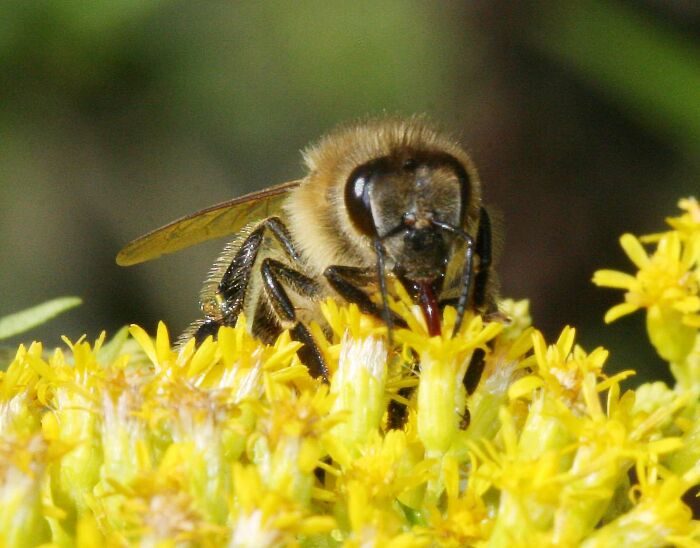Pesticides Found in Honey Samples Across the Globe
By Emma Gruner, Staff Writer
The use of pesticides to promote the growth of agricultural products is a common practice. Despite the environmental concerns associated with pesticides, they are generally considered the most efficient method to maximize crop quality and yield. Still, the extent and depth to which pesticides have permeated our global society may come as a shock – according to a recent study, three-quarters of the world’s honey contains some level of neonicotinoid (neonic) pesticides.
The study, led by Edward Mitchell of Switzerland’s University of Neuchâtel, is the first attempt to quantify neonic presence in honey on a global scale.
Between 2012 and 2016, Mitchell’s team collected honey samples from 198 sites on six continents in a citizen-science experiment, testing for five of the most commonly used neonics.
The results demonstrated that 75% of the samples worldwide contained a measurable amount of neonic.
Furthermore, 45% of samples contained two or more types of neonics, while 10% contained four or five. Continent-wise, North American honey was the most contaminated, with 86% of samples demonstrating neonic presence, followed by Asia and Europe, with 80% and 79% contamination, respectively. South American honey was the “purest”, with only 57% of samples showing neonic presence. The results were published in the journal Science on October 6.
How dire are these results? Humans need not worry about their own health. The average “contaminated” honey sample only showed a neonic concentration of 1.8 nanograms per 1 gram of honey – well below the level deemed safe for human consumption.
However, the threat is more severe for bees, who in past studies have displayed negative effects at neonic concentrations of just 0.10 ng/g.
These negative effects can include reduced brain function (particularly memory), reduced immunity, and reduced winter survival chances. The effect of neonics are thought to be especially severe for the queen, which could decrease reproduction and slow overall colony growth.
This recent study suggests that between one-third and one-half of the world’s honey contains neonic levels that are harmful to bees.
The results of the study, while not exactly encouraging, are also not surprising, given how frequently pesticides are used in both industrialized agriculture and home gardens. As Mitchell says, “It’s not a surprise, in a sense, that we find neonicotinoids in honey. Anybody could have guessed that.
What’s original is using the same protocol. We now have a worldwide map of the situation.” Indeed, most scientists are more concerned about the extent of the contamination than its mere presence.
Neonicotinoids were found everywhere from the West African coast to remote Pacific islands; this ubiquitous presence suggests that the bees have been, and will continue to be, exposed to the neonics constantly over generations.
Considering how heavily bees and other insects depend on their own honey for food, this could eventually turn into a serious problem. Researcher Amro Zayed, of Toronto’s York University, presents a human analogy, claiming that “It’s one thing to go out to a restaurant and get a bad meal, but if you have your fridge at home contaminated with insecticides, that’s an entirely different method of exposure.”
What can be done about this situation? Most scientists agree that farmers should begin seriously considering alternative pest control measures. Neonics present a threat to not only bees, but other insects as well, such as moths, butterflies, and earthworms. Furthermore, many common pests are already developing immunity to neonics, suggesting that their use is not only becoming dangerous but also obsolete.
At the very least, farmers are encouraged to reduce their pesticide use to situations that present an urgent threat; currently, neonics are typically used as a preventative, being sprayed on crops whether or not protection is needed.
Yet most scientists also agree that more research is needed on the subject. While this study provided a solid starting ground, many researchers are interested in studying the effects of long-term, small-dose exposure more closely, as well as the relationship between the amount of pesticides farmers use and the amount that turns up in honey. Until more answers are found, there is no immediate reason to panic.
According to Chris Coulson, of Halifax’s Dalhousie University, “There is going to be long-term exposure, potentially, to neonics, but that doesn’t say anything about the risk. Just because it’s there doesn’t necessarily mean there’s a problem.”

